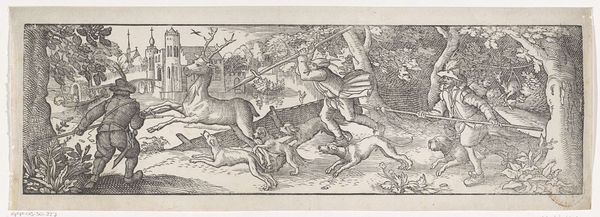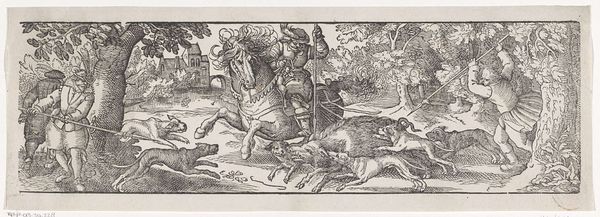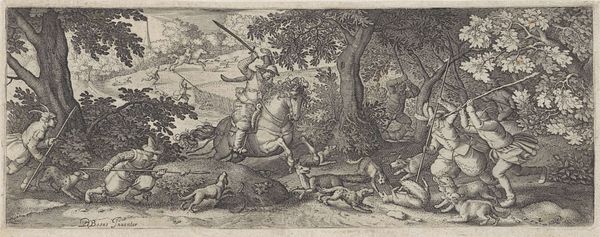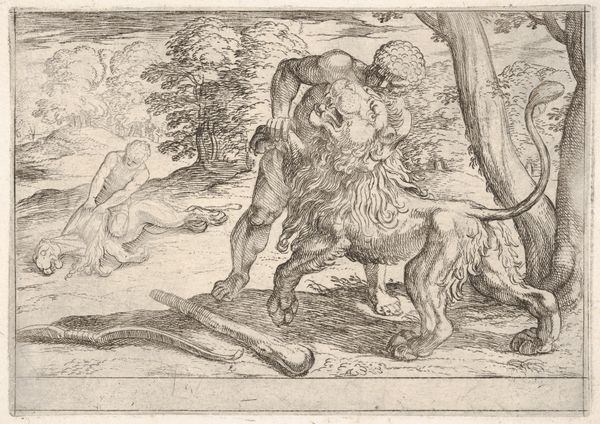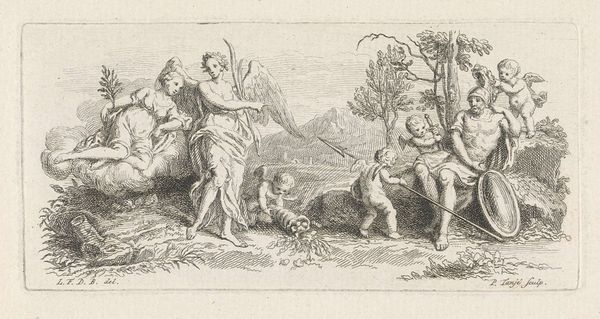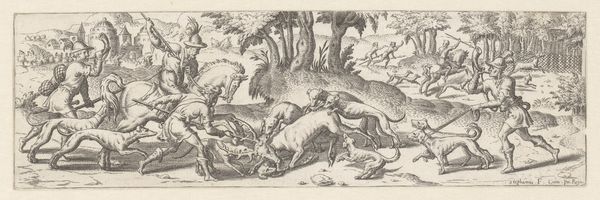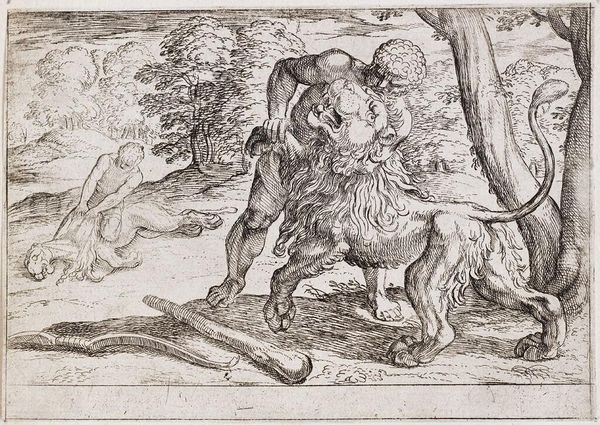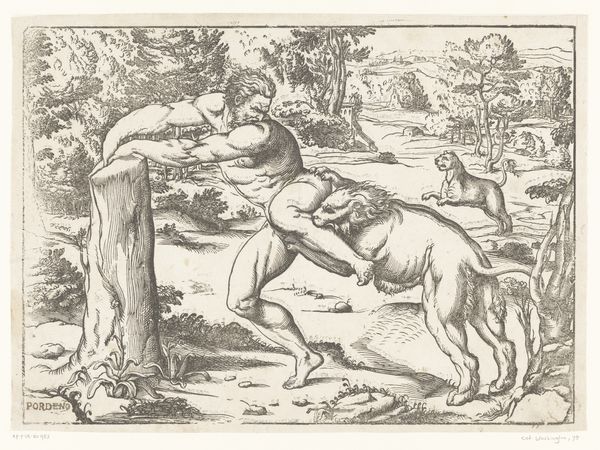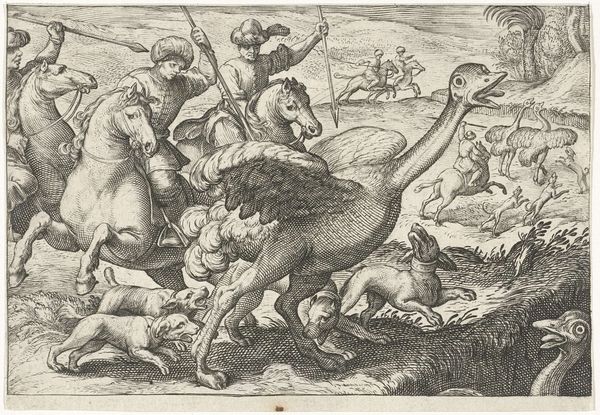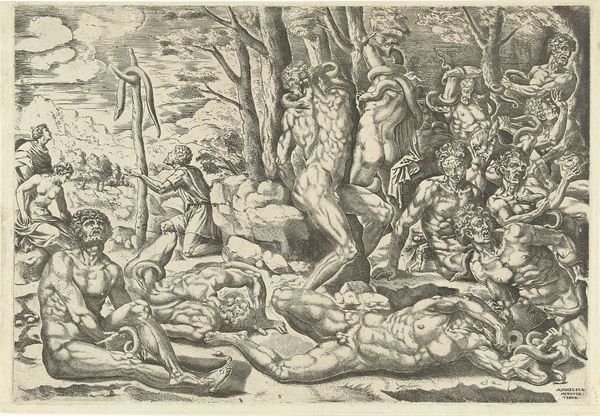
#
pen drawing
#
pen illustration
#
pen sketch
#
personal sketchbook
#
ink drawing experimentation
#
pen-ink sketch
#
horse
#
pen work
#
sketchbook drawing
#
sketchbook art
#
fantasy sketch
Dimensions: height 142 mm, width 417 mm
Copyright: Rijks Museum: Open Domain
Curator: Here we have "Hazenjacht" a pen drawing likely from sometime between 1601 and 1650, attributed to Philips Serwouters. What strikes you about it initially? Editor: It’s restless, wouldn’t you say? All motion and energy. A slightly unsettling hunt scene teeming with figures seemingly caught in mid-action across the composition. Curator: Yes, the dynamic lines certainly contribute to that sense of frenetic movement. The artist employs a sophisticated use of hatching and cross-hatching to model the forms, giving volume to figures rendered economically. Note how this use of line directs the eye. Editor: What’s compelling here, and perhaps deeply rooted in the era it reflects, is its visualization of privilege and power structures. Look at the hunters on horseback versus those struggling on foot amid a pack of dogs. Class division rendered explicit. Curator: I see what you mean. Although, let’s not forget Serwouters keen attention to detail throughout this image—consider the foliage of the forest backdrop against the figures. It offers us a very coherent pictorial plane despite the implied depth of field, constructed almost entirely through these very carefully applied, and quite complex, patterns of line work. Editor: I’d say this is a celebration of the aristocratic hunting tradition but, through a modern lens, what exactly are we being asked to admire? It invites scrutiny about human domination over animals. Curator: Perhaps you are right that Serwouters work highlights a perspective of its period, reflecting an understanding of human dominion over nature through social and symbolic means. Its technique makes us continue questioning, and appreciate the value of its history. Editor: Definitely— it offers so much layered narrative. Viewing this gives a deeper sense of the social structures in place.
Comments
No comments
Be the first to comment and join the conversation on the ultimate creative platform.
